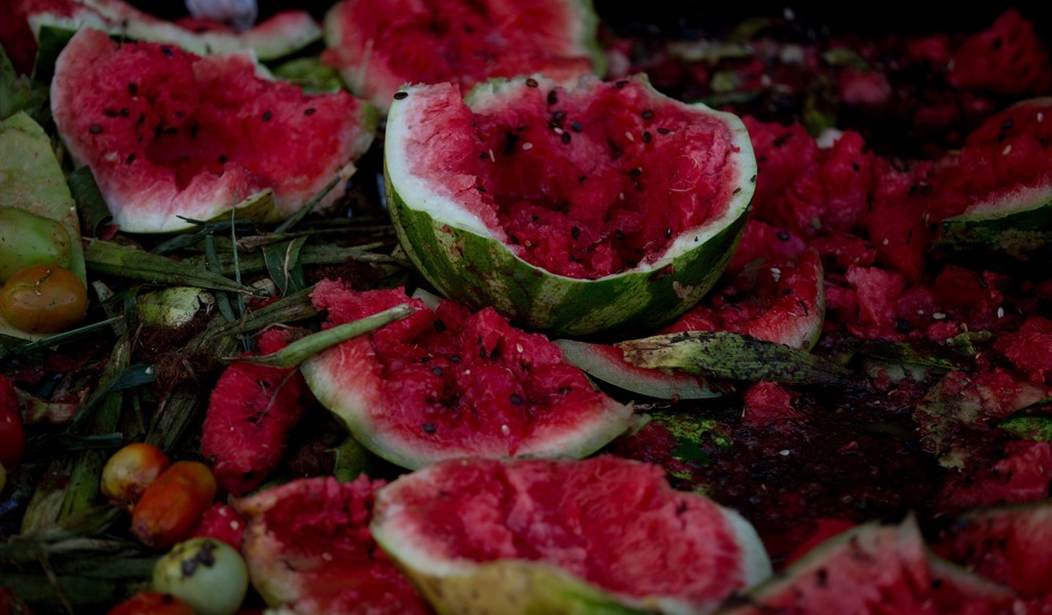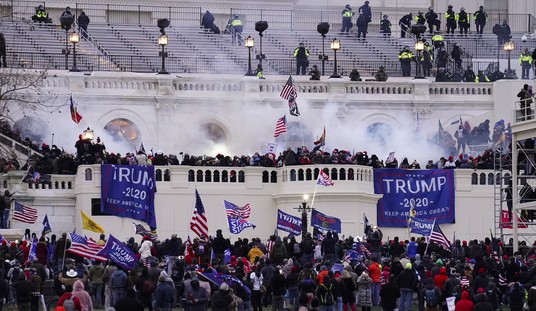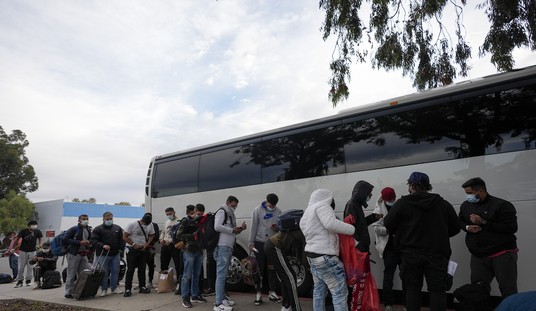What’s with all these watermelons at pro-Palestinian rallies? It seems odd, especially since nothing grows in Gaza, especially after Hamas took over the region by force in 2007. They gunned down Fatah Party members in the streets and threw them from roofs, later turning the Gaza Strip into a Jihadi hellhole. But the fruit surprisingly has a history of Palestinian nationalism that has its roots in the 1967 Six-Day War.
Israel tripled in size after that conflict, defeating Jordan, Syria, and Egypt, seizing all of Jerusalem, Gaza, the West Bank, the Golan Heights, and the Sinai Peninsula. All visible displays of the Palestinian flag were banned in Gaza and the West Bank. To circumvent the ban, Palestinians drew watermelons since the colors of the fruit, when cut open, represented their flag. It wasn’t until 1993 and the Oslo Accords that Palestinians could display the flag in public (via Time Magazine):
…Palestinians began using the watermelon because, when cut open, the fruit bears the national colors of the Palestinian flag—red, black, white, and green.
The Israeli government didn't just crack down on the flag. Artist Sliman Mansour told The National in 2021 that Israeli officials in 1980 shut down an exhibition at 79 Gallery in Ramallah featuring his work and others, including Nabil Anani and Issam Badrl. “They told us that painting the Palestinian flag was forbidden, but also the colors were forbidden. So Issam said, ‘What if I were to make a flower of red, green, black and white?’, to which the officer replied angrily, ‘It will be confiscated. Even if you paint a watermelon, it will be confiscated,’” Mansour told the outlet.
[…]
In the wake of the accords, the New York Times nodded to the role of watermelon as a stand-in symbol during the flag ban. “In the Gaza Strip, where young men were once arrested for carrying sliced watermelons—thus displaying the red, black and green Palestinian colors—soldiers stand by, blasé, as processions march by waving the once-banned flag,” wrote Times journalist John Kifner.
In 2007, just after the Second Intifada, artist Khaled Hourani created The Story of the Watermelon for a book entitled Subjective Atlas of Palestine. In 2013, he isolated one print and named it The Colours of the Palestinian Flag, which has since been seen by people across the globe.
The use of the watermelon as a symbol resurged in 2021, following an Israeli court ruling that Palestinian families based in the Sheikh Jarrah neighborhood in East Jerusalem would be evicted from their homes to make way for settlers.
[…]
In January, Israel’s National Security Minister Itamar Ben-Gvir gave police the power to confiscate Palestinian flags. This was later followed by a June vote on a bill to ban people from displaying the flag at state-funded institutions, including universities. (The bill passed preliminary approval but the government later collapsed.)
In June, Zazim, an Arab-Israeli community organization, launched a campaign to protest against the ensuing arrests and confiscation of flags. Images of watermelons were plastered on to 16 taxis operating in Tel Aviv, with the accompanying text reading, “This is not a Palestinian flag.”
Recommended
So, if you were curious about all the watermelons at these pro-terrorist demonstrations—here you go.
























Join the conversation as a VIP Member